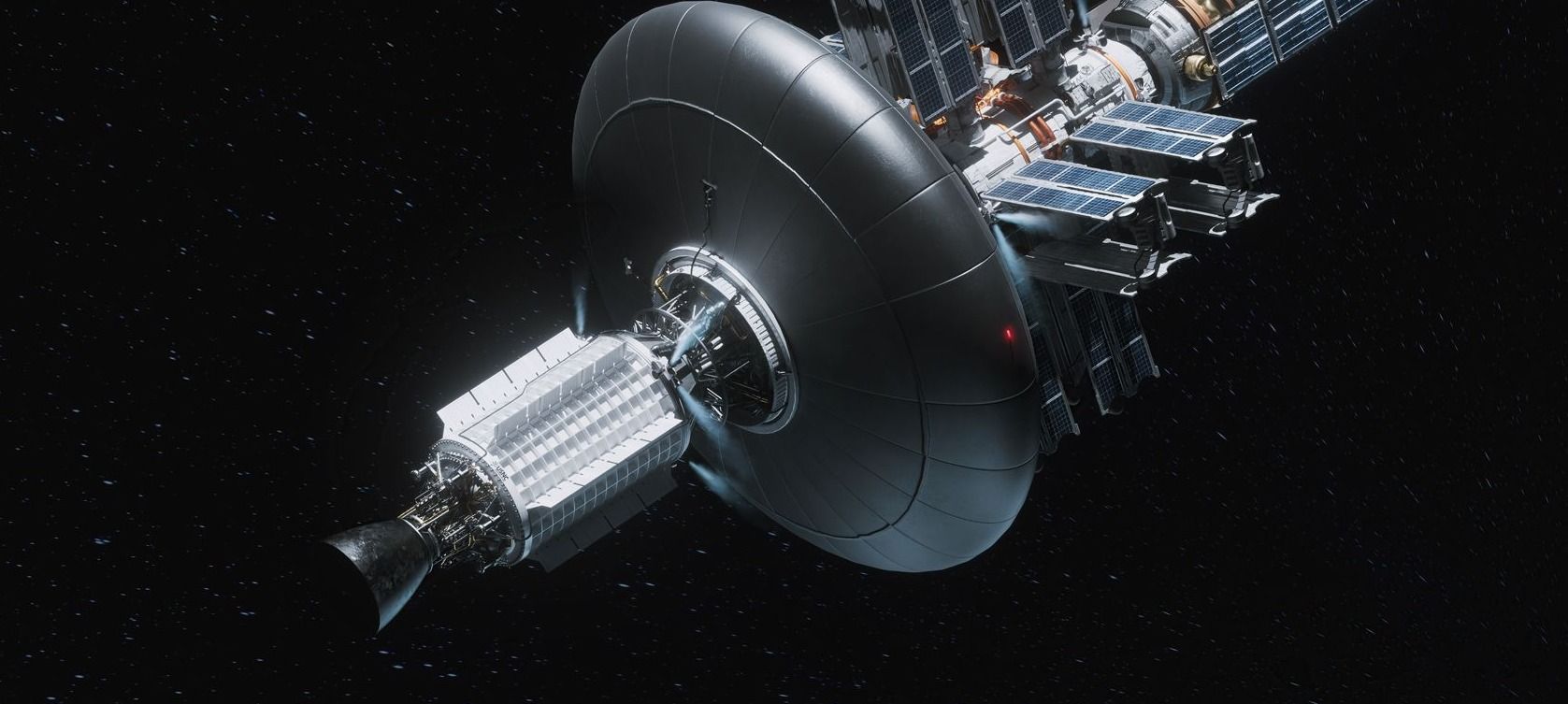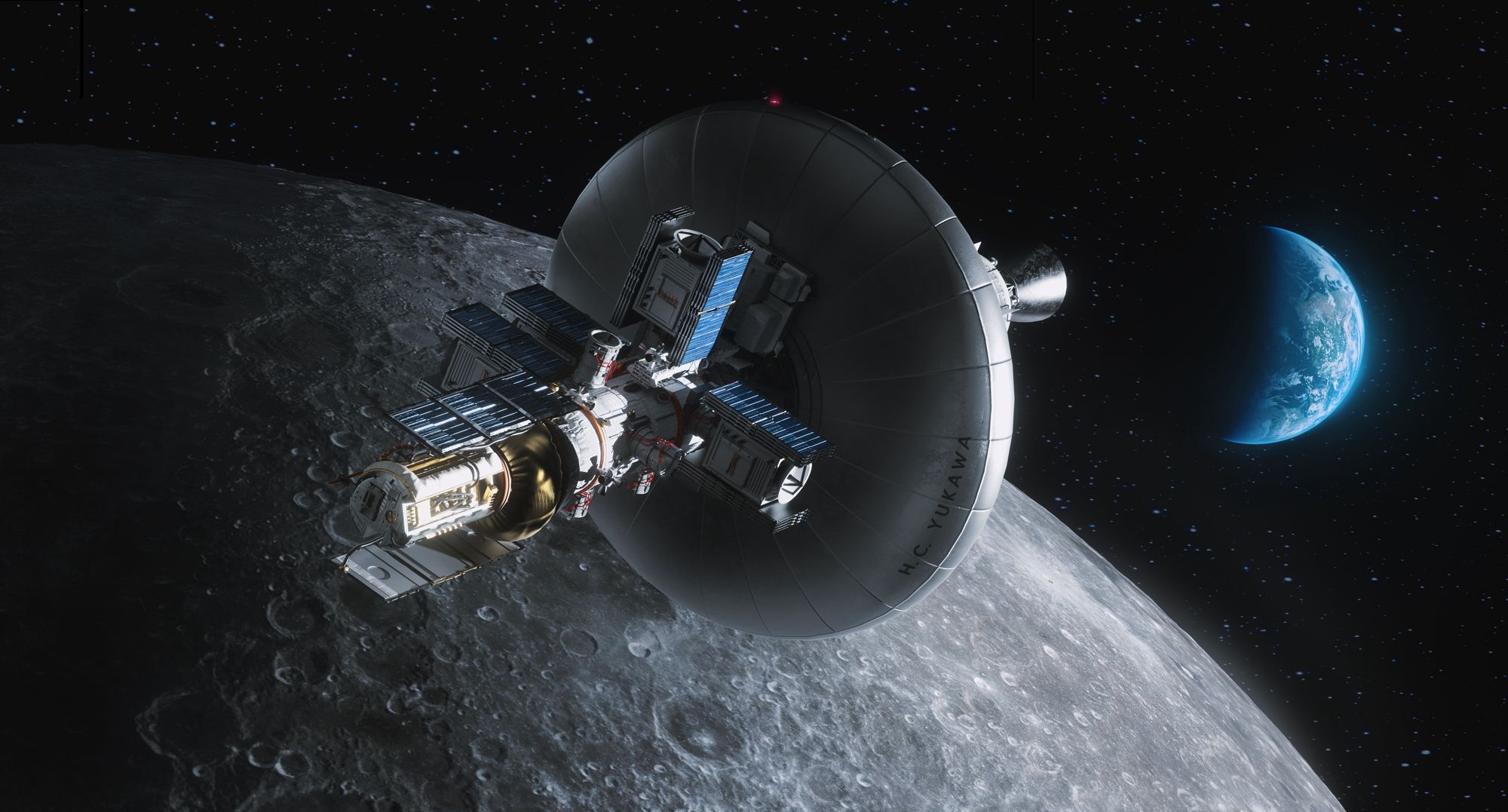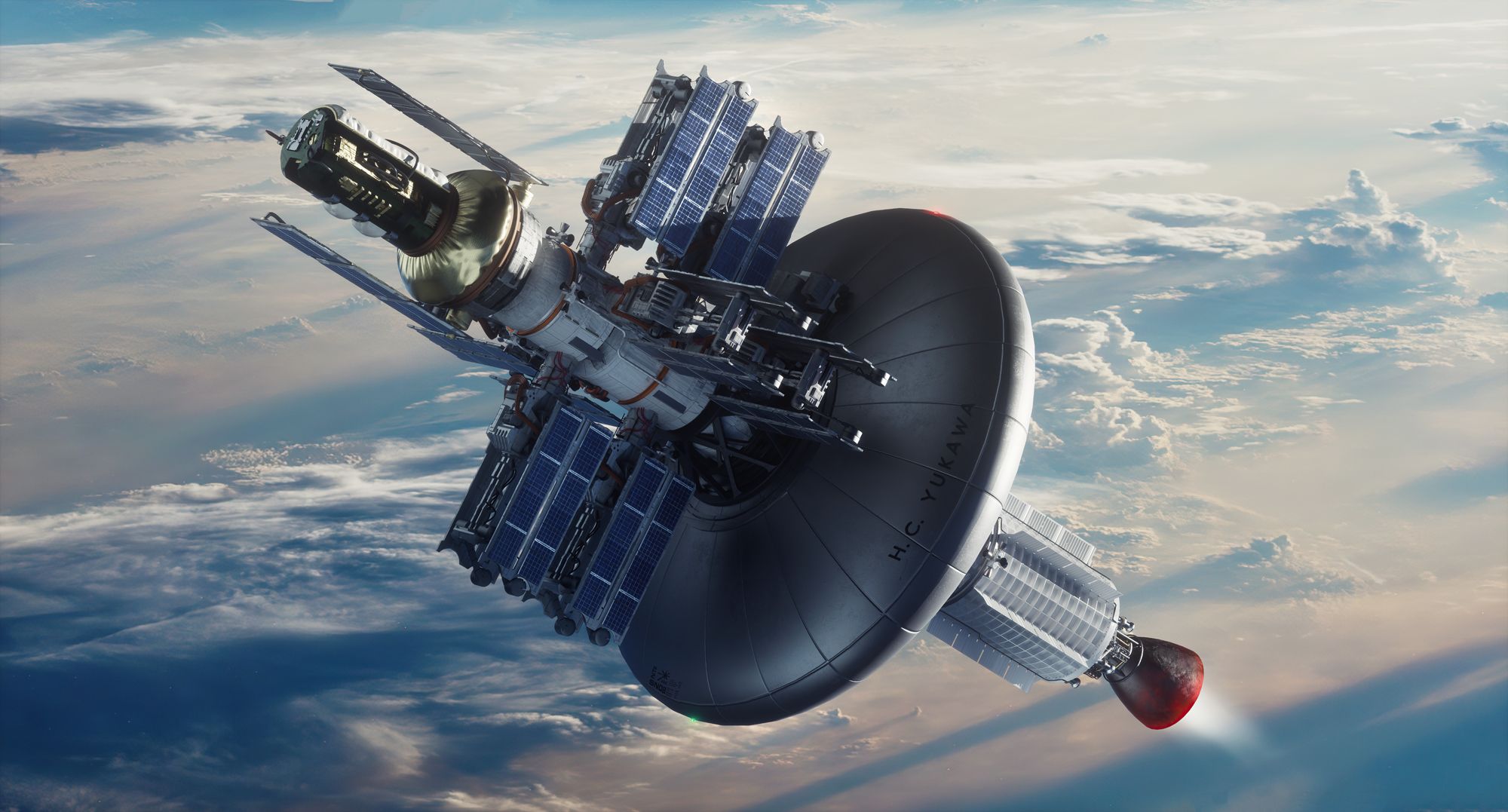NTP Engines
Nuclear Thermal Propulsion
Overview
Nuclear thermal propulsion (NTP) systems work by heating up a gas, usually hydrogen or ammonia, with a nuclear fission reactor and expanding that gas through a nozzle to produce efficient thrust. Nuclear engines will be used exclusively in space, not inside Earth’s atmosphere.

Performance
Deceptively Powerful
Ultra Safe Nuclear is developing a class of NTP engines with variants for technology demonstrations, Mars missions, and commercial applications. NTP engines are just a little larger than a trash can but can offer high specific impulse, enabling 2x ∆V (change in velocity) and 3-10x greater payloads than chemical propulsion engines. NTP engines will be cheap, fast, and carry lots of payload.
Lightweight
NTP engines will use a remarkably low quantity of uranium fuel in roughly 3-ton or smaller engines. The ZrC cercer-fueled, beryllium-moderated reactor core achieves all DOE and NASA goals with sufficient flexibility for commercial variants.
<19.75%
Enrichment
<50 kg
HALEU Mass
Simple
Use of monopropellants like H2 means fewer tanks and pumps compared to chemical bipropellants. Commercial variants will use non-cryogenic NH3 propellant.
Full Fission Product Retention
NTP engines will use nuclear fuels derived from FCM Fuel that allow for high temperature operation in hot hydrogen and ammonia environments.
Reusable
With in-space refueling, NTP engines have the potential for extensive reuse, performing multiple startups and shutdowns with margin.
Multi-use
NTP engines can also be used for power-intensive applications such as cryocoolers, life support, electric propulsion/bimodal operation, and other applications.
10x
Reusability
Capability
Get there Faster and Carry More Payload
NTP engines will offer step change capabilities for commercial missions including space tugs and deep space missions.
Missions



Commercial Capability
Unparalleled Orbital Maneuverability
Commercial NTP engines can produce more impulsive Δv than any current impulsive propulsion system.
Storable Propellant
Pressurized ammonia is storable at room temperatures and enables long duration missions.
5X+ Payload Capacity On High Δv Missions
Spacecraft equipped with commercial NTP engines can move more than five times the payload on high Δv missions compared to existing impulsive propulsion technology.
Lunar Round Trip Capable
Spacecraft equipped with commercial NTP engines enable travel from Earth orbit to Lunar orbit and back to Earth orbit.
55°+ Inclination Change Capable
The Δv enabled by commercial NTP can enable large inclination changes for spacecraft.
Falcon 9 Launchable
Dense ammonia propellant and a compact reactor design leaves ample room for payload even in a standard Falcon 9 fairing.
Refuellable On-orbit
Commercial NTP engines can be refilled with ammonia propellant and operate for multiple missions.

Mars Capability
Enabling Opposition-Class Mars Missions
The voyage to Mars is long and perilous, filled with cosmic and solar radiation. To protect astronauts from a high dose of space radiation, transit time must be significantly reduced. NTP engines will be able to complete opposition-class crewed Mars missions significantly faster than chemical propulsion.
12.5–25 klbf
Thrust
250 MWth
Thermal Power
900s
Isp

651 days
- Day 0: Earth Departure 8/30/2037
- Day 217: Mars Arrival 4/4/2038
- Day 247: Mars Departure 5/4/2038
- Day 465: Venus Swing-By 12/8/2038
- Day 651: Earth Return 6/11/2039
The Human Mars Mission Done Fast
NTP enables an opposition-class mission trajectory for human Mars exploration. The lower Δv conjunction class mission requires astronauts to be away from Earth for approximately 2.5 years. The opposition-class mission can be completed in approximately 1.5 years. The shorter opposition-class mission limits the astronauts’ exposure to the dangers of space travel but requires approximately 3 times the Δv – made possible by nuclear thermal propulsion.


Back to the Future
We Stand on the Shoulders of Giants
Nuclear thermal propulsion is a proven concept first demonstrated in the Rover and NERVA programs in the US from 1955 to 1973. These programs designed, built, and tested 22 engines before ending without attempting space launch.
 |
 |
 |
 |
 |
|---|---|---|---|---|
| Kiwi A | Kiwi B | Phoebus I/NRX | Phoebus 2 |
Padme
Interplanetary |
| 1958 | 1961 | 1965 | 1967 | |
| 100 MW | 1000 MW | 1500 MW | 5000 MW | |
| 5 klb Thrust | 50 klb Thrust | 50 klb Thrust | 250 klb Thrust |
Safety
Launch Failures
Launch failures do not pose an excess risk for NTP engines. The core is designed to withstand water submersion without activation. This means explosive launch failures or water submersion scenarios do not lead to nuclear accidents and pose no additional risk compared to ordinary launch failures.

Deployment
Ultra Safe Nuclear first pioneered the new paradigm for low enriched uranium nuclear rocket cores in 2015. Ever since, USNC-Tech has developed fuels, moderators, and core designs to enable the first NTP demonstration systems for NASA and DARPA NTP programs.

Related News
USNC Awarded $5M NASA Nuclear Propulsion Contract
SEATTLE (October 17, 2023) – Ultra Safe Nuclear Corporation (USNC), a leader in nuclear energy innovation, is pleased to announce that it has been awarded a
NASA Selects USNC Advanced Technologies for Ultra-High Temperature Component Testing Facility
USNC-Tech has been selected for a Phase II SBIR to develop an ultra-high temperature facility for testing materials planned for use in NTP systems.
USNC-Tech Team Wins Contract to Develop Nuclear Thermal Propulsion System For NASA
Idaho National Laboratory has selected USNC-Tech and its partners to develop a nuclear thermal propulsion (NTP) reactor concept design for space exploration: the Power-Adjusted Demonstration Mars Engine (PADME) NTP engine.


